Travel
Surreal nature, kindness, and incredible food await.
In 2008 I was secretly cringing at my life in suburban Michigan. I was 32, married to a charismatic guy, and living in a gorgeous house. On paper, I was living the stay-at-home soccer-mom dream: caring for three young kids, practicing yoga in cute outfits, and cruising around in a tricked-out minivan.
But toxicity simmered underneath. That huge house was a nightmare to maintain. My yoga classmates chased their enlightenment with a steady diet of Xanax, chardonnay, and adultery. My perfect husband was hiding a proclivity for Craigslist escorts and drugs, eventually going to jail for fraud.
One day, I snapped and bought a one-way flight for the family to Argentina (as you do)—a country I could barely pick out on a map, and whose language I could not speak. There was no plan except to get far, far away. To dramatically shatter my previous lifestyle.
Twelve years later, my days are spent gardening outside of my little adobe hobbit home in the Andes of Patagonia. Lunches with neighbors can last hours, and it’s almost expected of me to take a leisurely nap afterward. My kids grew up in a community where the teachers greeted them with warm hugs every morning, a place void of school shootings where play dates involved waterfall hikes instead of video games. And, as a newly divorced single mom, I was able to raise my family on a part-time income in an earthly paradise.
Here, I’ve met backpackers who realize, mid-hike, that they have no reason to return to where they came from. I’ve befriended digital nomads who earn in dollars and spend in peso, and older expats who retired here in high style when doing so in America was impossible.
It’s easy to surrender to the pull of this massive South American country. Argentines are famously warm, curious, and welcoming, and with a little bit of effort, you will be speaking Castellano (Argentina’s particular version of Spanish) and getting invited to asados (local barbecues) in no time. For those looking for deeper connections to people and to nature, who thrive on “going with the flow” (or who at least want to try), and who value a relaxed and warm quality of life, Argentina is a near-perfect home. Here’s what you need to know before taking the plunge.
Navigating the visa process
In normal times, a tourist visa is incredibly easy to get and maintain. US citizens will be asked at the airport for an address where you will be staying, and voila, you are granted 90 days in the country.
Most people who live here just cross an international border every 90 days—hopping on a ferry to Uruguay or crossing the Andes to Chile are the easiest options—and restart the clock. Some have maintained this schedule for years and years. If you do overstay a tourist visa, you just need to pay a fine (currently under $100) at the airport before you fly out.
Work visas and permanent residency are much harder to procure. While it’s not impossible to get other long-term visas for study or work, Migraciones makes things complicated with a ton of paperwork, appointments, and general all-around frustrating bureaucracy. For example, I was nearly two years into the process when my passport expired. I got a new passport, but it had a different number— which invalidated everything and restarted the nightmare anew. So yeah, prep for headaches if you want residency.
Any plans to relocate should come with tempered expectations, as Argentina has endured the world’s longest nationwide quarantine. Domestic tourism is tentatively expected to slowly return for the summer months (November through February), but foreigners shouldn’t plan a visit until at least 2021. While some may feel that the restrictions are too harsh, it does say a lot about the culture in Argentina in that it takes the health of its citizens seriously.
Prepare to be very confused about money
Let’s get this out of the way: The economic situation here is a disaster. Inflation rates are some of the most shocking in the world: 34% in 2018 rising to 53% in 2019. And exchange rates are extremely confusing. As of this writing, the official rate is 77 pesos to the US dollar if you’re using a bank card or an ATM. But if I Western Union myself cash from my US bank account, I receive 149 pesos to the dollar. Even with a nominal Western Union fee, I still get close to double the “official” rate. If you bring cash with you, just ask around for a “cueva” who will buy your dollars at the “blue rate.”
Making money in Argentina
Pretty much any expat will tell you to make money remotely in US dollars any way you can. Work part-time teaching English to kids in China. Do data entry for some lame company in Kansas. Get your Upwork profile updated and take on any job you can. Buenos Aires is home of many cool coworking spaces, making online work more comfortable and fun. With the dollar-to-peso rate consistently spiraling, earning in dollars and living in pesos means that at the very least you can keep up with inflation.
Many people do this analogue while taking advantage of the visa program. Shannon Bodett, who moved to Patagonia in 2012, used to go back to Colorado for three months every winter to bartend, which gave her enough cash to live off of the rest of the year in Argentina. But once she started a business and put down roots in Argentina, she quickly learned how much harder she has to work to bring in just a tiny fraction of the money she could in the states. She recommends, if at all possible, to move here with online work from an employer who pays in dollars.
But entrepreneurs will always be entrepreneurs no matter where they are based. Frank Almeida moved from Chicago to Buenos Aires in January of 1999 and has since started multiple businesses in the capital. He currently runs Asado Adventure Food Tours, which teaches tourists the art of Argentine barbecue, as well as Craft Beer Adventure, which explores the vibrant beer scene.
“The bureaucracy is a nightmare, inflation kills your profits, and credit is costly,” says Almeida. “But Argentina is absolutely never dull. You can’t be complacent. You should come down here with an open attitude, ready to learn how things are done here and leave behind how you think things should be done from where you come from.”
The cities are great… but the getaways are otherworldly
Sound like a complete clusterfuck so far? Sure. But these hurdles are small compared to Argentina’s payoffs. Buenos Aires is one of the most intriguing capital cities on Earth. It rivals the vibrancy of New York while offering lots of housing options at accessible prices, striking a balance between Latin warmth and European cool. The nightlife gets cranking around 3am (you read that right), so don’t plan on leaving a club until it’s full-fledged morning and you can head to a cafe for coffee with all the new friends you made that night.
But the ease of escaping the big cities for an unforgettable adventure sets it all over the top, whether that means a quick trip to Mendoza for an indulgent weekend in one of the world’s most picturesque and affordable wine countries or cavorting with whales and penguins deep in the Andes.
On a single-mom part-time salary, I’ve been able to take my kids scuba diving with sea lions and also on a week-long horseback trip through wetlands, where they learned to hunt wild boar with lassos. They’ve whitewater kayaked in turquoise rivers, snowboarded the Andes, camped at the base of waterfalls with no other human within miles, mountain-biked huge dunes by the Atlantic Ocean, and sandboarded and climbed Piedra Parada, one of the world’s top rock climbing destinations. This variety of easily accessible outdoor adventure is the kind of thing that makes the Argentina experience so alluring to me.
Don’t forget there is stargazing in the arid Northwest, which has some of this planet’s clearest and most expansive skies. Or a romantic getaway to Iguazu Falls, arguably some of the most stunning waterfalls in the world.
So yeah, the bureaucracy and economics are a pain in the ass. But that’s what Malbec and mountains are for.
The food is as indulgent as it is transcendent
I was a strict vegetarian for 14 years. Now happily gnaw lamb right off the bone after I slice off a chunk from over an open fire. I delight in “splurging” on the fancy $4 bottle of wine. Lazy mornings are spent with a pile of glazed croissants and cafe con leche. Gelato has become a crucial part of my life.
This is the land of chorizo and bife ancho, of giant steaks served up by real gauchos. It’s a country that takes its eating very seriously. I’m not saying it’s the healthiest diet in the world—even a casual meal can be ridiculously hedonistic. But given the fact that hiking is engrained in life, you can justify it all pretty easily.
Argentine is extremely LGBTQ friendly
Equal rights are as much a way of life here as sizzling meat and sprawling nature. Gay marriage laws have been in effect since 2010, when Argentina proudly led the charge in Latin America to implement them. The government does not just extend these equal civil rights to citizens, but to any human who steps foot on Argentina soil and would like to marry someone of the same sex. The country has been repeatedly voted Best International LGBTQ Destination and Best LGBTQ Destination in Latin America, largely due to a hardworking public/private sector collaboration to create Argentina as a welcoming, inclusive destination.
What does this mean for living here? Well, that you are free to be yourself. A friend of mine who works at a government-level regional tourism board often shows up to work events in full drag and is not just fully supported, but celebrated. And if you don’t agree with it, just stay away. We have a good thing going here and would like to keep it that way.
Where to live in Argentina
One thing most people don’t realize about Argentina is just how massive it is. It’s not all just the BA hiding among a sea of mountains and icebergs. It’s about as long as the US is wide, and with that comes a huge diversity in both climate and culture.
The Northeast is flat, tropical, and covered in dense jungle, while the Northwest has a desert-like climate and a strong focus on folkloric music. There are multiple wine regions, small hippie pueblos, and seaside surf towns. There is even end-of-the-world, not-for-the-faint-of-heart Tierra del Fuego, which is about as close as you can get to Antarctica without actually being in Antarctica.
Knowing where to set down your stakes is crucial. These are a few spots to consider for a new home.
Buenos Aires: If you love big cities without typical big city prices, BA is alluring. Called “The Paris of South America” and about the size of four Chicagos, it’s artsy, gritty, fashionable, and a good mix between manic and chill. Public transportation is cheap and extensive, the nightlife is intense (even on weekdays), and there’s always free events happening throughout the city.
Mendoza: There are vineyards everywhere you turn, picturesque Andes towering in the background which nestle up to neighboring Chile, and on average over 320 days of sun per year with a dry Mediterranean climate. Mendoza is a place you should consider if you love wine, have a car, and come with a bit of expendable cash.
Bariloche: With its mountains, glacial lakes, wildflowers, and chocolate, Bariloche is like living in the Swiss Alps at a fraction of the cost and with no expectation for punctuality. Its draws include an impressive craft-beer scene; world-class skiing at Cerro Catedral; and Lago Nahuel Huapi, a huge lake at the base of town that offers sailing, kiteboarding, and some lovely secluded beaches.
Cordoba: It’s got a college town/big city vibe but without the congestion of Buenos Aires. Plus, just outside of the city is some spectacular hiking, so you get both city and countryside in one place. Fun fact: it’s the birthplace of fernet, the bartender-favorite herbal liquor that all but defines acquired taste… but once you acquire it, it becomes a game changer.
Salta: This northern province is a haven for outdoor lovers who aren’t into the “four seasons a year and one includes snow” part of Patagonia. The climate is closer to New Mexico or Arizona, just with endless bottles of inexpensive big reds, crisp whites, and the best empanadas in the country.
Cathy Brown splits her time between traveling the globe writing for Lonely Planet and CNN, working with Indigenous rights in the Brazilian Amazon, and hanging out at home in her garden and hosting permaculture and medicinal plant retreats.

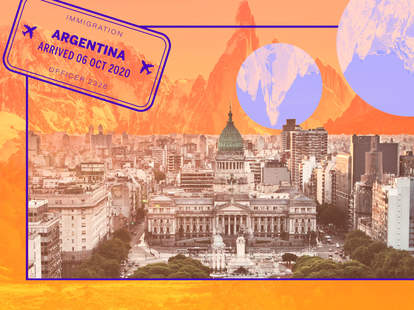
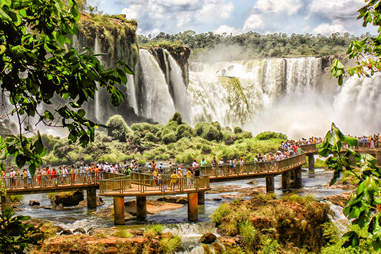
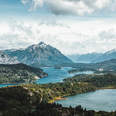
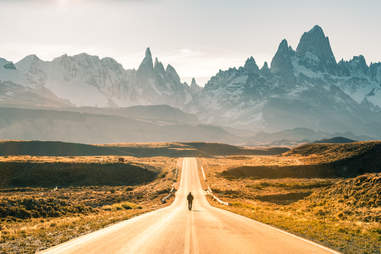
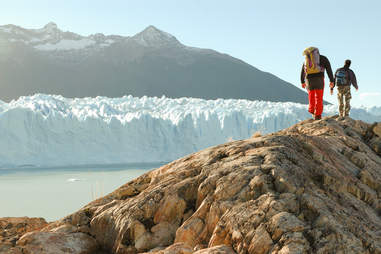
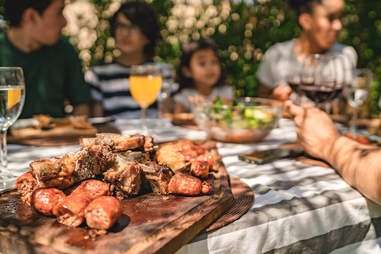
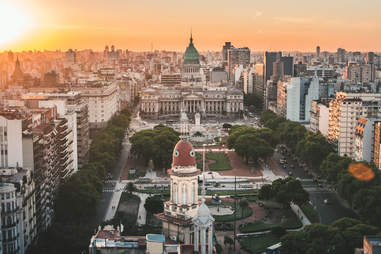

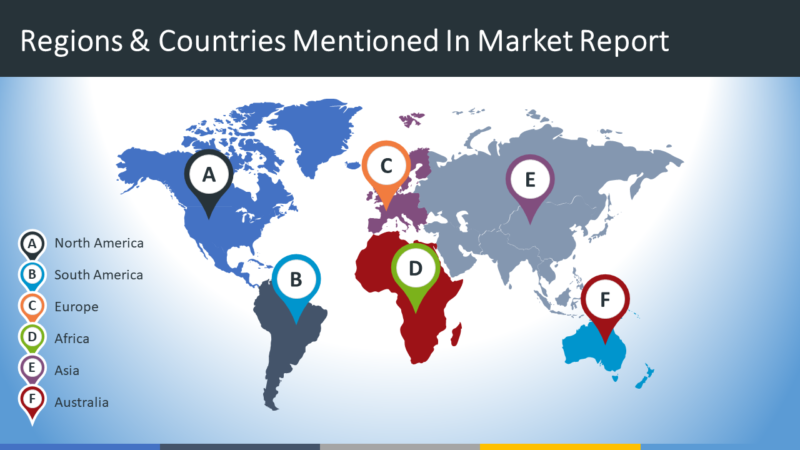


Recent Comments